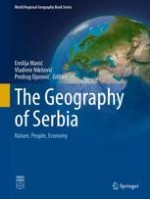2022 | OriginalPaper | Buchkapitel
10. Demographic Profile of Serbia at the Turn of the Millennia
verfasst von : Daniela Arsenović, Vladimir Nikitović
Erschienen in: The Geography of Serbia
Aktivieren Sie unsere intelligente Suche, um passende Fachinhalte oder Patente zu finden.
Wählen Sie Textabschnitte aus um mit Künstlicher Intelligenz passenden Patente zu finden. powered by
Markieren Sie Textabschnitte, um KI-gestützt weitere passende Inhalte zu finden. powered by
